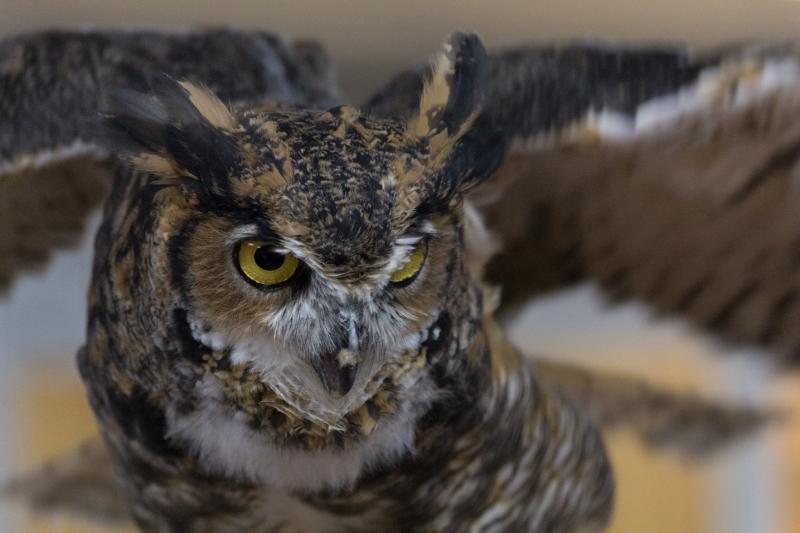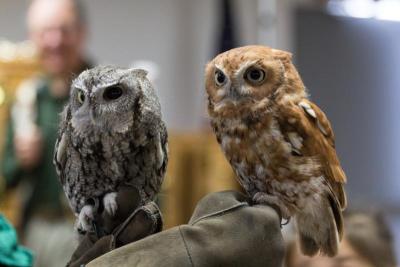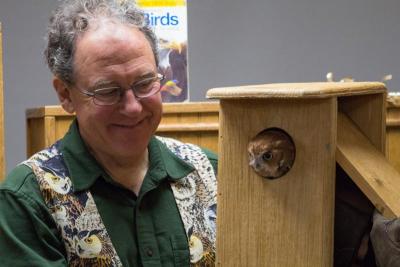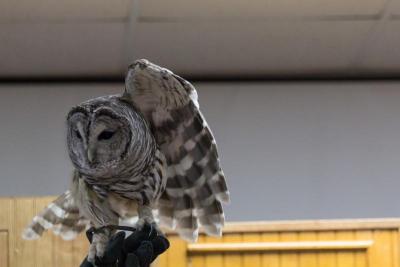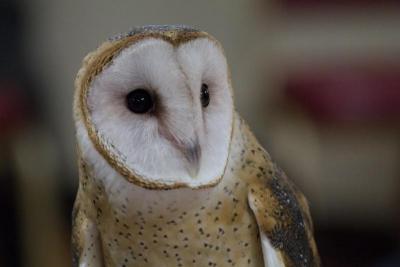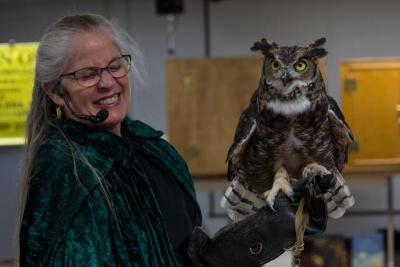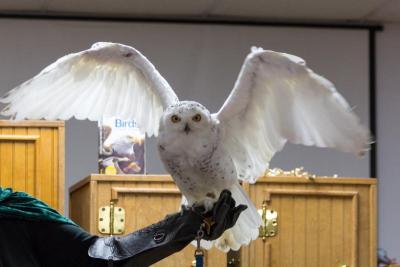Halloween season is a hoot with Eyes On Owls
Harry Potter fans and owl enthusiasts were in for a real treat when the Eyes On Owls program came to Southworth Library.
Over 200 people packed into the library’s children’s section the afternoon of Oct. 3 to enjoy a presentation of several live owls by Marcia and Mark Wilson.
For more than 20 years, the Wilsons have been caring for permanently injured owls. Most are incapable of flight or could not otherwise survive in the wild on their own.
The event began with a reading of “Baby Owls” by Martin Waddell before the real fun started.
Two eastern screech owls, a barred owl, a barn owl, a great horned owl, and a snowy owl were introduced to the crowd. All of these species are native to the Dartmouth area and all but the snowy owl can be seen year-round.
The Wilsons fielded questions from the kids and even invited some to come up and try each owl’s distinctive hoot.
The two tiny screech owls, one gray and one red, had both survived being hit by cars and have lost their ability to fly. The gray one was blinded in one eye and, subsequently, it has a very distinctive pitch black eye.
The barred owl had also survived a car-related injury, though the injuries it sustained were much more severe. It ultimately lost its an entire right wing. However, as a larger species of owl, it’s likely to still live a long life.
The willowy-looking barn owl was quite distinctive, slimmer than the rest of the owls with an eerie-looking face. This owl was born in captivity and imprinted on humans. Because of this, she is not equipped to fend for herself in the wild.
Next was the great horned owl, an enormous bird that was very eager to escape its carrying case. This owl was found as a baby on the Blue Hills Reservation after falling out of its nest and breaking its right wing. Incapable of returning to the wild, it could still live to be 30 to 40 years old in captivity.
Last but not least was the snowy owl, to the excitement of the many Harry Potter fans present. Like the barn owl, he was born in captivity and would not be able to survive in the wild.
Marcia’s parents were bird banders and wildlife rehabilitators, so she’s been surrounded by birds for her entire life. Her mom, an environmental educator, used to do programs like this, so it was only natural for Marcia to carry the torch.
“Marcia was raised by owls,” Mark joked.
Mark, a wildlife photographer, has been photographing owls and other birds since he was a teenager.
But what is it about owls that is so captivating?
“People connect with [owls] because of the eyes,” Mark said. “…I think that’s why people are drawn to them, me included. You give them attributes they may not have…and I think it’s all because of their eyes.”
The Wilsons emphasized that owls are not pets, which is why the birds were introduced to the crowd by their species name as well as their scientific names rather than by pet names.
“We don’t want kids to think of them as pets,” said Mark. “The best way is to not give them cutesy pet names. So we use the scientific name, and the kids learn some taxonomy and they learn how different owls are related.”
Bird-watching and getting involved in nature doesn’t have to be a daunting task, Marcia said.
“A lot of this starts with a bird feeder,” Marcia said. “It just gets the whole family involved… Keep it simple and the birds are going to come in. Everybody loves them.”



